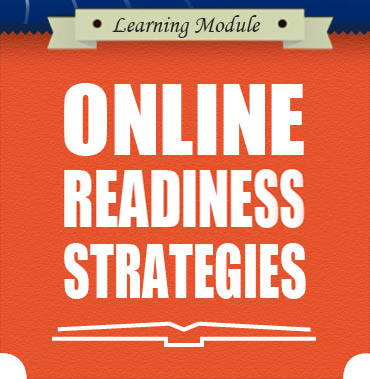Principles
Stay Current
Ensure that the course content is updated, functional, and published on time.
The course site should have an updated syllabus, instructor information section and communication policy; Canvas due dates and times should be checked for accuracy; any external tools should be fully set up; and the course site should be made available to students no later than the first day of the term.
Nilson, L. B., & Goodson, L. A. (2017)
Encourage Equity
State and implement course policies that are sensitive to the needs of nontraditional students.
Create consistency in cycles of work; allow at least one weekend day for recurring and large assignments and exams; allow late submissions whenever feasible (for partial credit if needed); schedule module releases so students can work slightly ahead if needed.
Lehman, R. M., & Conceição, S. C. O. (2013); Darby, F., & Lang, J.M. (2019)
Communicate Clearly and Quickly
State and implement a clear communication policy that supports the pace and structure of the course.
A clear communication policy sets expectations and a tone for the course, and it communicates to nontraditional, online and hybrid students that you’re aware of their needs. For example, a 24-hour response time on business days to student emails and providing information about how to schedule a “student hours” appointment outside of email.
Zhang, C.W., Hurst, B., & McLean, A. (2016); Lowenthal, P. R., Dunlap, J. C., & Snelson, C. (2017)
Provide Notice
Provide timely notice to students about changes to course materials, due dates, procedures or your communication availability.
Provide advance notice whenever possible (via email, a course announcement, etc.) if something has changed. It’s especially important to notify students about any deviations from the stated communication plan, such as illness, conference travel or family emergencies.
Ko, S. S., & Rossen, S. (2017)
Commit to Timeliness
Provide grades and meaningful feedback before the next assignment is due, including on graded discussion board activities.
Students need timely feedback to understand their progress in the course and to apply that feedback before the next assignment. The timing for feedback should align with the pace of the course, but a good rule of thumb is to return it within one week.
Wiggins, G. (2012); Ambrose, S. A. (2010); Walvoord, B. E., & Anderson, V.J. (2010)
Be Present
Demonstrate instructor presence by using course tools effectively to engage with learners and to encourage active learning.
Instructor presence in the online and hybrid classrooms is one of the strongest indicators of student success and satisfaction. Canvas course tools, email and external tools should be used in an intentional and effective way to communicate with students and encourage them to be active participants in their learning.
Ladyshewsky, R. K. (2013); Martin, J. (2019)
Foster Community
Cultivate a community among online/hybrid students by facilitating regular and meaningful interaction between learners.
Play an active role in creating a sense of community by participating in and facilitating student-to-student interaction in discussion forums, checking in with project groups, etc. This is particularly important for true distance students, who want to feel a sense of belonging to the Titan community.
Lambert, J. L, & Fisher, J.L. (2013); Clarke, L.W., & Bartholomew, A. (2014)
Support Students
Communicate in a supportive manner.
The tone and content of your communication with students should be positive and encouraging, with the intent of supporting students through challenges and encouraging a growth mindset. This communication includes course announcements, emails, discussion board posts, written feedback on assignments, etc.
Deacon, A. (2012); Baldwin, A., Bunting, B. D., Daugherty, D., Lewis, L., & Steenbergh, T. A. (2020)
Reach Out and Refer
Check in with students who may be struggling, and refer students to the appropriate technology, academic or student support services in response to their articulated or observed needs.
Observe student progress and check in with students who are unresponsive or not meeting course expectations. Be responsive when students reach out about any course-related, academic, personal or financial issues; refer students to appropriate resources available to CSUF students as needed, and connect with campus Student Services for assistance in making referrals.
Carrell, S. C., Kurlaender, M. and Bhatt, M.B. (2016); Palloff, R. M., & Pratt, K. (2013)
Cultivate Inclusion
Make facilitation choices that support diverse students and make each student feel welcomed and valued.
Welcome students to the course; refer to each student by name and with the appropriate pronouns; highlight student successes; encourage students who may not feel like they belong in higher education; and respect and honor diverse student identities, experiences and perspectives.
Sadykova, G., & Meskill, C. (2019); Ke, F. & Chávez, A.F. (2013); National Academies of Sciences, Engineering, & Medicine. (2018)
Blend Learning in Hybrid Courses
Explicitly draw connections between in-class and online learning activities to blend learning across the modalities.
Make intentional connections between in-class and online learning and identify those connections for students, e.g. students might summarize an online discussion in class that launches an in-class group activity that leads to a follow-up writing assignment online.
McGee, P., & Reis, A. (2012); Dwivedi, A., Dwivedi, P., Bobek, S., & Sternad Zabukovšek, S. (2019); Kahn, C., & Hindman, L.L. (2021).

